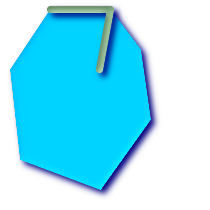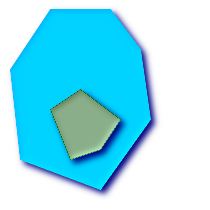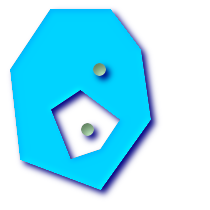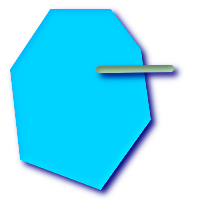ST_Contains
Name
ST_Contains — Returns true if and only if no points of B lie in the exterior of A, and at least one point of the interior of B lies in the interior of A.
Synopsis
boolean
ST_Contains
(
geometry
geomA
, geometry
geomB
)
;
Description
Geometry A contains Geometry B if and only if no points of B lie in the exterior of A, and at least one point of the interior of B lies in the interior of A. An important subtlety of this definition is that A does not contain its boundary, but A does contain itself. Contrast that to ST_ContainsProperly where geometry A does not Contain Properly itself.
Returns TRUE if geometry B is completely inside geometry A. For this function to make sense, the source geometries must both be of the same coordinate projection, having the same SRID. ST_Contains is the inverse of ST_Within. So ST_Contains(A,B) implies ST_Within(B,A) except in the case of invalid geometries where the result is always false regardless or not defined.
Performed by the GEOS module
Enhanced: 2.3.0 Enhancement to PIP short-circuit extended to support MultiPoints with few points. Prior versions only supported point in polygon.
![[Important]](images/important.png)
|
|
|
Do not call with a
|
![[Important]](images/important.png)
|
|
|
Do not use this function with invalid geometries. You will get unexpected results. |
This function call will automatically include a bounding box comparison that will make use of any indexes that are available on the geometries. To avoid index use, use the function _ST_Contains.
NOTE: this is the "allowable" version that returns a boolean, not an integer.
 This method implements the
OpenGIS Simple Features
Implementation Specification for SQL 1.1.
s2.1.1.2 // s2.1.13.3
- same as within(geometry B, geometry A)
This method implements the
OpenGIS Simple Features
Implementation Specification for SQL 1.1.
s2.1.1.2 // s2.1.13.3
- same as within(geometry B, geometry A)
 This method implements the SQL/MM specification. SQL-MM 3: 5.1.31
This method implements the SQL/MM specification. SQL-MM 3: 5.1.31
There are certain subtleties to ST_Contains and ST_Within that are not intuitively obvious. For details check out Subtleties of OGC Covers, Contains, Within
Examples
The
ST_Contains
predicate returns
TRUE
in all the following illustrations.

|

|

|

|
The
ST_Contains
predicate returns
FALSE
in all the following illustrations.

|

|
-- A circle within a circle
SELECT ST_Contains(smallc, bigc) As smallcontainsbig,
ST_Contains(bigc,smallc) As bigcontainssmall,
ST_Contains(bigc, ST_Union(smallc, bigc)) as bigcontainsunion,
ST_Equals(bigc, ST_Union(smallc, bigc)) as bigisunion,
ST_Covers(bigc, ST_ExteriorRing(bigc)) As bigcoversexterior,
ST_Contains(bigc, ST_ExteriorRing(bigc)) As bigcontainsexterior
FROM (SELECT ST_Buffer(ST_GeomFromText('POINT(1 2)'), 10) As smallc,
ST_Buffer(ST_GeomFromText('POINT(1 2)'), 20) As bigc) As foo;
-- Result
smallcontainsbig | bigcontainssmall | bigcontainsunion | bigisunion | bigcoversexterior | bigcontainsexterior
------------------+------------------+------------------+------------+-------------------+---------------------
f | t | t | t | t | f
-- Example demonstrating difference between contains and contains properly
SELECT ST_GeometryType(geomA) As geomtype, ST_Contains(geomA,geomA) AS acontainsa, ST_ContainsProperly(geomA, geomA) AS acontainspropa,
ST_Contains(geomA, ST_Boundary(geomA)) As acontainsba, ST_ContainsProperly(geomA, ST_Boundary(geomA)) As acontainspropba
FROM (VALUES ( ST_Buffer(ST_Point(1,1), 5,1) ),
( ST_MakeLine(ST_Point(1,1), ST_Point(-1,-1) ) ),
( ST_Point(1,1) )
) As foo(geomA);
geomtype | acontainsa | acontainspropa | acontainsba | acontainspropba
--------------+------------+----------------+-------------+-----------------
ST_Polygon | t | f | f | f
ST_LineString | t | f | f | f
ST_Point | t | t | f | f